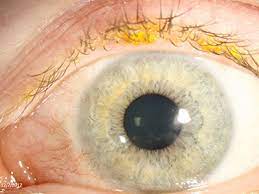How to protect eyes from ocular surface disease?
Ocular Surface Disease OSD is a group of disorders that affect the surface of the eyes including cornea, conjunctiva, tear film, eyelids and eyelashes. They result in a number of symptoms depending upon the affected part and environmental factors. The overall symptoms include:
Dryness or a gritty sensation in the eyes, redness, blurring of vision, excessive tearing, eye fatigue, sensitivity to light.

Following are some common ocular surface disease:
- Dry eye syndrome
- Conjunctivitis
- Blepharitis
- Keratitis
- Corneal Abrasions
- Pinguecula
- Pterygium
- Allergic conjunctivits
Causes of ocular surface disease
Dry eye syndrome is one of the leading causes of OSD. It occurs when the eyes do not produce enough tears or when the tears evaporate too quickly. Several factors can contribute to dry eye syndrome, including age, gender (more common in women), certain medications, and environmental factors such as dry air or wind.
The meibomian glands are located along the eyelid margins and produce the oily layer of the tear film, which helps prevent tears from evaporating too quickly. Dysfunction of these glands can lead to an unstable tear film and dry eye symptoms.
Exposure to environmental factors such as smoke, dust, wind, and air conditioning can irritate the eyes and contribute to OSD.
Wearing contact lenses can increase the risk of developing OSD, particularly if proper hygiene practices are not followed as it can trap debris and bacteria against the surface of the eye, leading to irritation and inflammation.
Certain systemic diseases, such as autoimmune disorders (e.g., Sjögren’s syndrome, rheumatoid arthritis), diabetes, and thyroid disorders, can affect the health of the tear film and increase the risk of developing OSD.
Certain medications, such as antihistamines, decongestants, and antidepressants, can reduce tear production and contribute to dry eye symptoms.
As we age, the composition of our tears changes, and tear production tends to decrease. This can lead to an increased risk of developing OSD, particularly in older adults.
How to control onset of ocular surface diseases
There are some simple yet effective strategies for maintaining healthy eyes and preventing OSD:
Maintaining eye hygiene
One of the most effective ways to prevent OSD is to maintain good eye hygiene. Wash your hands regularly with soap and water, and avoid touching or rubbing your eyes, as this can introduce bacteria and irritants that can lead to eye infections and inflammation. Irritants such as smoke, dust, and allergens can cause eye irritation and discomfort. By practicing good eye hygiene, such as keeping our eyes clean and avoiding rubbing them, we can minimize the risk of irritation.
Wearing eye protection
When engaging in activities that can expose our eyes to dust,debris, heat or chemicals, such as yard work or cleaning, be sure to wear protective eyewear, such as safety glasses or goggles. Wearing protective goggles can prevent foreign particles from entering the eyes and reduce the risk of ocular infections. There are some occupations in which wearing goggles is very important e.g. welders, cooks, labourers etc.

Screen time associated OSD
With the increasing use of digital devices, many people experience symptoms of digital eye strain, such as dry eyes, blurred vision, and headaches. Wearing blue light blocking glasses can help reduce the exposure to blue light from screens, alleviating eye strain and discomfort. To reduce eye strain, follow the 20-20-20 rule: every 20 minutes, take a 20-second break and look at something 20 feet away. This can help reduce eye fatigue and improve tear production.
Incorporating enriched diet
A diet rich in omega-3 fatty acids, vitamins C and E, and zinc can help promote eye health and reduce the risk of developing OSD. Vitamin A is essential for maintaining a clear cornea and overall eye health.
Escaping dehydration
Drinking plenty of water can help keep our body and eyes hydrated, which is essential for maintaining a healthy tear film and preventing dry eye symptoms. We should drink at least eight glasses of water a day to keep your eyes moist and comfortable.
Regular visits
Regular eye exams are essential for maintaining good eye health and catching any potential issues early. An eye care professional can detect signs of OSD and recommend appropriate treatment to help protect our eyes.
Founder of EyesMatterMost- an optometry student who loves talking about eyes. I tend to cover topics related to optometry, ophthalmology, eye health, eyecare, eye cosmetics and everything in between. This website is a medium to educate my readers everything related to eyes.
